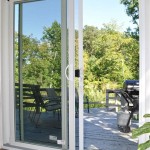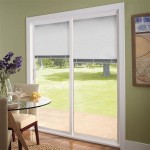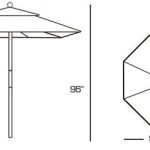Patio Flooring Interlocking Tiles: A Comprehensive Guide
Patio flooring interlocking tiles represent a versatile and increasingly popular solution for creating aesthetically pleasing and functional outdoor spaces. These tiles, designed to easily connect and disconnect, offer a viable alternative to traditional patio surfaces like poured concrete, pavers, or wood decking. This article will delve into the various aspects of interlocking patio tiles, including their advantages, material options, installation procedures, maintenance tips, and considerations for selecting the appropriate type for specific needs.
Advantages of Interlocking Patio Tiles
Interlocking patio tiles present several compelling advantages over conventional patio construction methods. These benefits contribute to their growing adoption in residential and commercial outdoor settings.
One significant advantage is the ease of installation. Unlike poured concrete or complex paver layouts, interlocking tiles require minimal specialized tools or expertise. The interlocking mechanism allows for a relatively quick and straightforward installation process. Many homeowners can successfully install the tiles themselves, saving on professional installation costs. Furthermore, the modular nature of the tiles makes it possible to create custom patterns and designs with relative ease. This flexibility allows for personalization and adaptation to various patio shapes and sizes.
Another key benefit is the ease of maintenance and repair. Individual tiles can be easily replaced if damaged, stained, or worn. This localized repair capability prevents the need to replace entire sections of the patio, as might be necessary with poured concrete or glued-down tiles. Cleaning is also simplified, as most interlocking tiles can be easily cleaned with a hose and mild detergent. The raised profile of some tile designs allows for efficient drainage, preventing water accumulation and reducing the risk of mold and mildew growth.
Finally, interlocking patio tiles offer a high degree of portability and adaptability. The tiles can be readily disassembled and relocated to a new location. This is particularly advantageous for renters or individuals who anticipate moving in the future. The ability to reuse the tiles also contributes to their overall cost-effectiveness and sustainability.
Material Options for Interlocking Patio Tiles
A wide variety of materials are used in the manufacture of interlocking patio tiles, each offering distinct aesthetic and performance characteristics. The selection of the appropriate material depends on factors such as desired appearance, durability requirements, budget constraints, and environmental considerations.
Plastic interlocking tiles, typically made from recycled polypropylene or polyethylene, are a popular choice due to their affordability, durability, and resistance to moisture and insects. These tiles are often designed with drainage channels to facilitate water runoff and prevent standing water. Plastic tiles are available in a range of colors and textures, often mimicking the appearance of wood or stone. While generally durable, plastic tiles can be susceptible to fading under prolonged exposure to sunlight and may not offer the same aesthetic appeal as natural materials.
Rubber interlocking tiles, often manufactured from recycled tires, provide excellent shock absorption and slip resistance, making them a suitable choice for patios used for recreational activities or areas where safety is a concern. Rubber tiles are highly durable and resistant to weathering, but they may emit a rubbery odor, particularly in warmer climates. They are available in various colors and thicknesses, offering options for both aesthetic and functional requirements.
Wood interlocking tiles, typically made from hardwoods like teak, cedar, or redwood, offer a natural and visually appealing aesthetic. Wood tiles provide a warmer and more inviting feel compared to plastic or rubber options. However, wood tiles require regular maintenance, including cleaning, staining, and sealing, to prevent warping, cracking, and fading. They are also more susceptible to damage from moisture and insects compared to synthetic materials. Composite wood tiles, made from a blend of wood fibers and recycled plastic, offer a compromise between the natural appearance of wood and the durability of plastic, requiring less maintenance than traditional wood tiles.
Stone interlocking tiles, typically made from materials like slate, granite, or travertine, offer a high-end and durable patio surface. Stone tiles provide a natural and elegant aesthetic, but they are generally more expensive and heavier than other tile options. Installation requires careful handling to prevent chipping or cracking. Stone tiles also require periodic sealing to protect against staining and moisture damage. The natural variation in color and texture of stone tiles contributes to their unique appeal.
Concrete interlocking tiles present a durable and versatile option. They can be manufactured in various shapes, sizes, and colors, and can even mimic the look of natural stone or brick. Concrete tiles are resistant to weathering and heavy traffic. They may require sealing to prevent staining and enhance their durability. The weight of concrete tiles can make installation more challenging, but the resulting patio surface is typically very stable and long-lasting.
Installation and Maintenance Considerations
Proper installation and maintenance are crucial for ensuring the longevity and performance of interlocking patio tiles. Following established guidelines and adopting appropriate maintenance practices will help to preserve the appearance and functionality of the patio surface.
Prior to installation, it is essential to prepare a level and stable base. The area should be cleared of debris, vegetation, and any loose soil. A layer of compacted gravel may be necessary to provide adequate drainage and support. For plastic and rubber tiles, a simple level ground surface is often sufficient. For heavier stone or concrete tiles, a more robust base, such as compacted gravel and sand, may be required. It is crucial to ensure that the base is properly sloped to facilitate water runoff and prevent standing water.
The interlocking mechanism of the tiles typically allows for a straightforward installation process. Tiles are aligned and connected using the built-in locking tabs or connectors. A rubber mallet may be used to gently tap the tiles into place, ensuring a secure connection. It is important to follow the manufacturer's instructions regarding spacing and alignment. For larger patios, it may be necessary to cut tiles to fit around obstacles or edges. Power saws or utility knives can be used to cut the tiles to the desired shape.
Regular cleaning is essential for maintaining the appearance of interlocking patio tiles. A hose and mild detergent can be used to remove dirt, debris, and stains. For stubborn stains, a brush or pressure washer may be necessary. It is important to avoid using harsh chemicals or abrasive cleaners, as these can damage the surface of the tiles. For wood tiles, regular staining and sealing are necessary to protect against moisture and UV damage. Stone tiles should be periodically sealed to prevent staining and enhance their durability. Inspecting the tiles regularly for any signs of damage, such as cracks or chips, and replacing damaged tiles promptly will help to prevent further deterioration.
Proper drainage is crucial for preventing water accumulation and reducing the risk of mold and mildew growth. Ensuring that the patio surface is properly sloped and that drainage channels are clear will help to facilitate water runoff. In areas with heavy rainfall, it may be necessary to install additional drainage systems to prevent waterlogging. Removing leaves and debris regularly will also help to maintain proper drainage.
The selection of the appropriate type of interlocking patio tile depends on several factors, including the intended use of the patio, the aesthetic preferences of the homeowner, the budget, and the environmental conditions. Considering these factors carefully will help to ensure that the selected tiles meet the specific needs and requirements of the patio space.
For high-traffic areas or patios used for recreational activities, durable and slip-resistant materials such as rubber or concrete are recommended. For aesthetic appeal and a natural look, wood or stone tiles may be preferred. For budget-conscious projects, plastic tiles offer an affordable and practical solution. It is also important to consider the maintenance requirements of each material and select a tile that aligns with the homeowner's willingness to invest time and effort in upkeep. Choosing a reputable manufacturer and verifying the quality and warranty of the tiles will help to ensure a long-lasting and satisfactory patio surface.

Interlocking Decking Tiles Outdoor Hsunns 12 X Set Of 20 Wooden Floor For Indoor And Patio Garage Pavers Brown A6945 Com

Btmway 1 Ft X Square Interlocking Acacia Wood Quick Patio Deck Tile Outdoor Checker Pattern Flooring 10 Per Box Cxxbn Gi33346w685 Tile01 The Home Depot

Pure Garden 11 5 In X Outdoor Interlocking Polypropylene Patio And Deck Tile Flooring Stone Grey Set Of 6 Hw1500206 The Home Depot

Perforated Interlocking Patio Tiles Over Concrete Made In Usa

Modern Wood Decking Tiles Solid Color Interlocking Patio Flooring Clearhalo

Skyland Wood Interlocking Flooring Tiles 12 X Square Solid Teak Outdoor For Patio Checker Pattern Pack Of 10 Com

Pure Garden 11 5 In X Outdoor Interlocking Polypropylene Patio And Deck Tile Flooring Stone Grey Set Of 6 Hw1500206 The Home Depot

Perforated Interlocking Patio Tiles Over Concrete Made In Usa

Classic Wood Deck Tiles Interlocking Composite Patio Flooring Clearhalo

Outdoor Flooring Over Grass Or Dirt Interlocking Tiles








